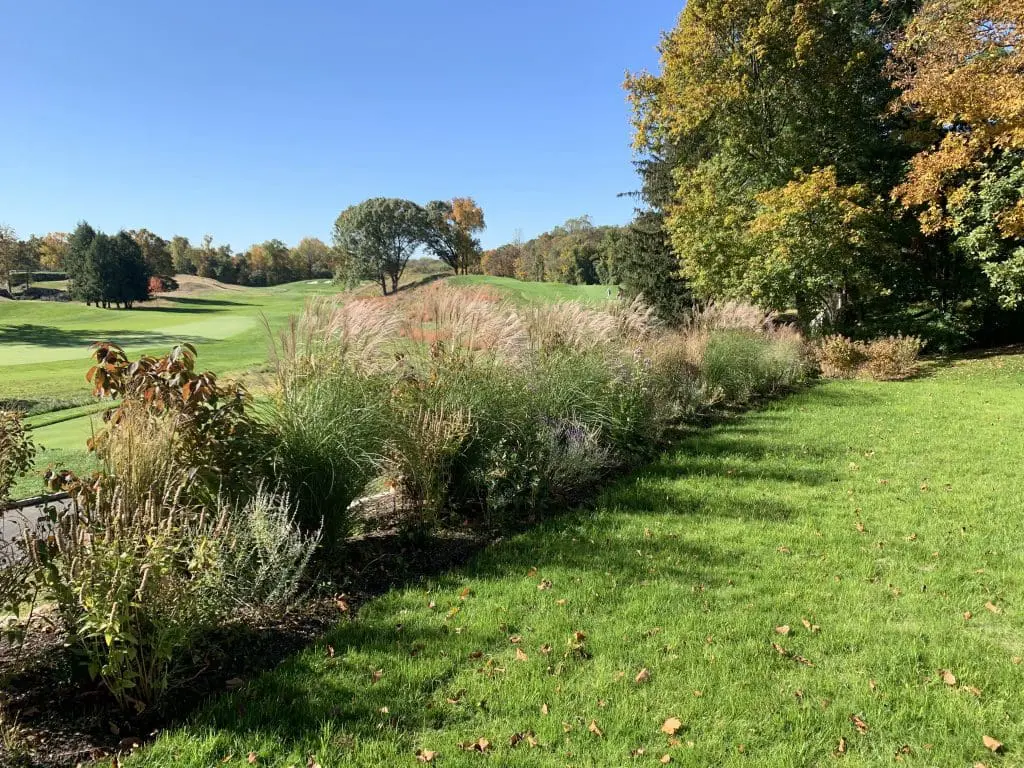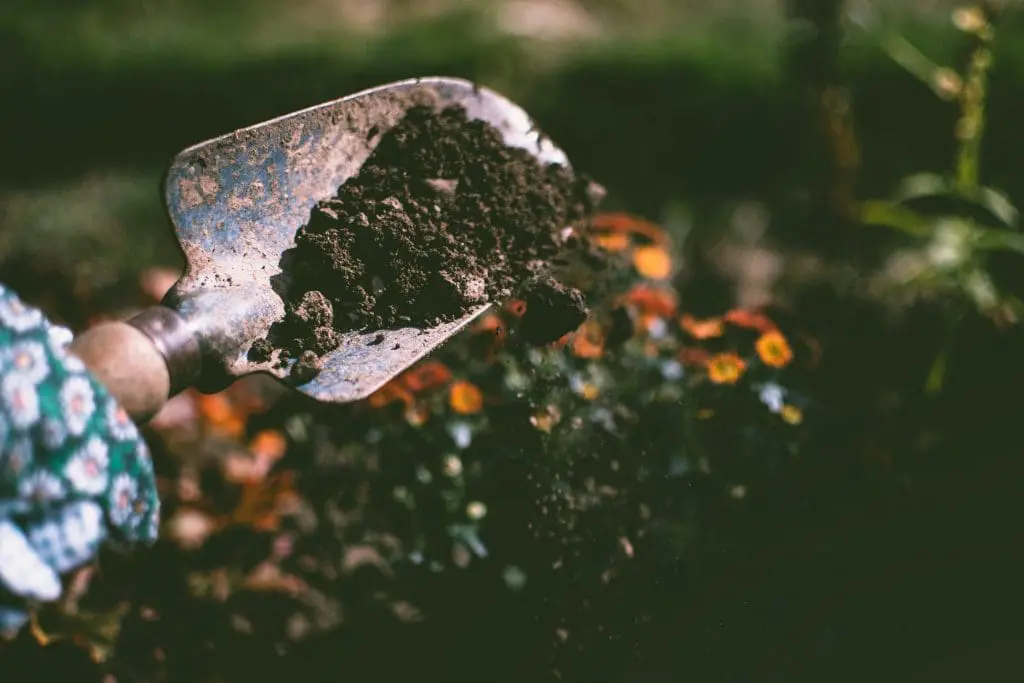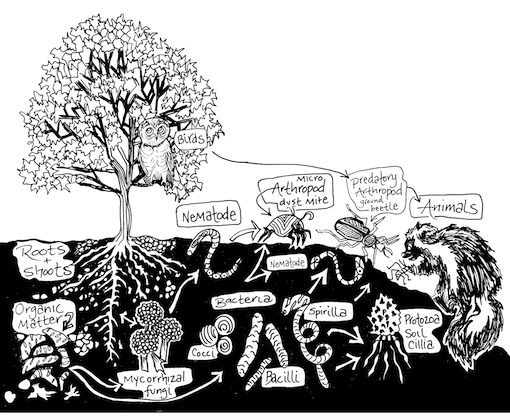As landscape ecologists and designers, we consider ever property an opportunity to improve the health of the local ecosystem and the human health of our clients. These may seem like lofty goals, but we are not just any landscape design firm in Fairfield or Westchester county. We are proudly an ecological design firm, and nothing brings us more joy than designing and caring for healthy, productive landscapes.
We’ve compiled six tips for fostering a safe and healthy landscape. Below we explain the first two critical steps; stay tuned for the rest in our follow up blog posts!
1. Ditch the Landscape Chemicals and Turn Your Property Organic
There are so many reasons to take your landscape organic. The most obvious are the human health benefits associated with living in a toxin-free environment.
Toxic Exposures & Legal Action Over Landscape Chemicals
You probably saw the headlines about plaintiffs in cases against Monsanto that were awarded millions of dollars for their cancer diagnoses, which the courts found linked to their years-long exposures to Glyphosate via the Monsanto herbicide Roundup. (Despite all this, the EPA in January re-approved Glyphosate use on the market, and is currently being sued by a number of groups including NRDC, Beyond Pesticides & Center for Food Safety)
Chemical pesticides have been linked to various cancers, enzyme disruption, endocrine disruption, autoimmune diseases, and miscarriages. They are detrimental to human health and have no place in the landscape. Learn more on our previous blog post Take Your Landscape Organic.

Pesticides Have No Place in a Healthy Ecosystem
Synthetic pesticides persist in the environment and wreak havoc on local ecology. The USGS found Glyphosate in 50% of rivers and streams, and 40% of lakes, ponds and wetlands, concluding that plants and wildlife experience chronic low-level exposures in a wide range of ecosystems nationwide. Insecticides like Pyrethroids, often used to “treat” landscapes for ticks and mosquitos, have been found in streams in urban and agricultural areas in a form that is bioavailable to aquatic animals.
Pesticides also disrupt soil microbial activities. Research has found “inactivation of nitrogen‐fixing and phosphorus‐solubilizing microorganisms,” as well as limited soil enzyme activity in soils treated with pesticides. This decrease in activity has a ripple effect on plant health and nutrition.
Likewise, if a plant has a cheap diet of chemical fertilizer, it relies less on expanding its root system and nurturing its relationship with soil microbes, thereby sacrificing immune defense and creating a downward spiral of decreasing biodiversity. Soil microbes are essential building blocks for healthy plants and provide critical ecosystem services (see tip #2).
Furthermore, landscape chemicals, particularly the insecticide class of neonicotinoids, have been detected in wild, native bees, which, according to USGS, “can cause a reduction in population densities and reproductive success, and impairing the bees’ ability to forage. Insecticides and fungicides can also increase a bee’s susceptibility to disease and parasites.”

In pumping our landscapes with chemicals, we are single-handedly destroying soil microbiology, plant immune health, and critical pollinator populations.
The most basic step to improve the health of your landscape – for yourself and local ecology—is to completely rid it of synthetic pesticides, herbicides and insecticides. You will be reducing dangerous exposures for you and your loved ones and as a result, allowing natural biodiversity to resurface. Learn more about our organic land care program on our Organic Landscape Maintenance page.

2. Cultivate Soil Microbiology & Spend Time in the Dirt!
Soil Microbes Are Earth’s MVP
Now that you have a toxin-free landscape, the microbes in your soil (bacteria, fungi, protozoa and nematodes) can grow and flourish! It is estimated that one teaspoon of healthy soil can contain an astonishing 1 billion bacteria, several yards of fungal hyphae, thousands of protozoa and dozens of nematodes.
Soil microbes evolved alongside plants over many thousands of years in a beautiful partnership: microbes find a home and some food on plants’ roots, and in exchange breakdown critical nutrients (nitrogen, phosphorous and potassium, among others) in the soil so that they are plant available.

Microbes even provide plants protection from pathogens. A strong soil microbial community is the key to proper plant nutrition and hardy immune system – aka a thriving and resilient garden!
Furthermore, soil microbes are the foundation of countless essential ecosystem services. They breakdown environmental pollutants, cycle nutrients in the Soil Food Web, mitigate droughts and floods, prevent erosion and conserve water. Incredible!
Microbes are also unsung heroes of carbon sequestration; they transfer CO2 from plant photosynthesis into the soil where it is stabilized as a carbon sink. The soil accounts for more carbon than the atmosphere and all plants on earth combined. If we want to take positive action against global climate change, we need to cultivate healthy soils.
Healthy Soil, Healthy Human
Fascinating new research suggests that soil microbes and human gut microbes are strongly related and also likely evolved alongside each other over many thousands of years; it is thought that soil microbes even have the ability to communicate with our cells!
In the past, humans had more direct contact with the soil – from farming by hand to eating organic food (before organic was a *thing*) to children playing outside daily – and therefore had more opportunity to connect with soil microbes.

Today, we have to make conscious efforts to reconnect with our microbial evolutionary partners. Fortunately, the benefits are quick and easy. M. vaccae, a beneficial soil bacteria, has been linked to the growth of neurons in the brains of mice and increased levels of serotonin, decreased anxiety, and faster learning. Thankfully, the American Society for Microbiology reports that “people likely ingest [M. vaccae] or breath in when they spend time in nature.”
That’s right, simply getting your hands in the dirt or taking a stroll through the organic landscape can jumpstart the human health benefits associated with soil microbes. What are you waiting for?!

Stay tuned for parts two and three of this series, dropping next week!